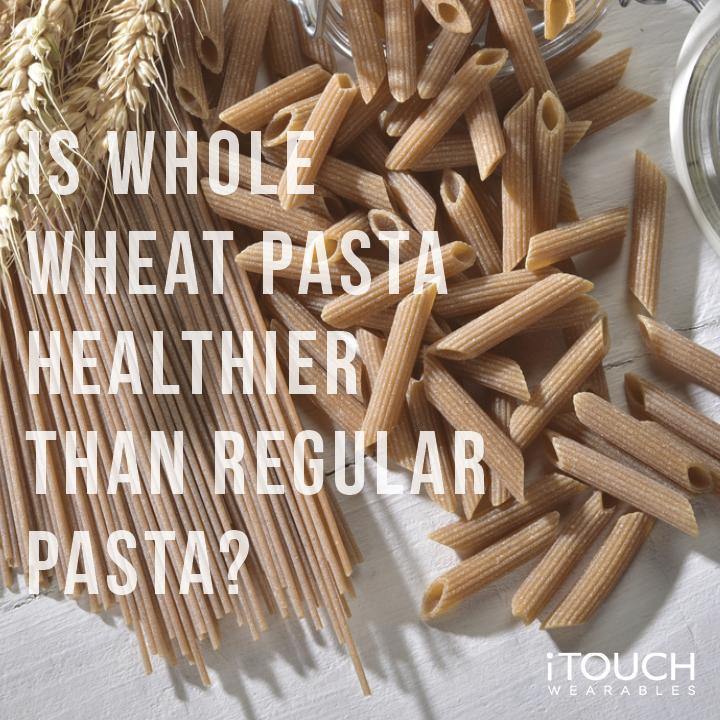
Is Whole Wheat Pasta Healthier Than Regular Pasta?
As we all know - pasta is an absolute staple and a global favorite for all! From dishes like spaghetti carbonara, to even ramen and udon, noodles and pasta are a culinary revolution that can be found in almost every culture and geographical origin. This being said, as you may know, not all pasta is made alike.
On this blog, we have talked about the multiple different types of pasta - from chickpea to quinoa to even zucchini noodles - but one that we have not to approach yet is whole wheat pasta. When it comes to whole wheat noodles, it should be known that they have a chewier texture than regular pasta, but it's also more nutrient-rich for any diet. Even more so, brown pasta wins out over regular pasta every time as your healthiest choice. If you are curious has to why - we have the perfect guide for you.
What Is Whole Wheat Pasta and How Is It Healthier?

When it comes to grains, it is essential to know that all grains are whole before they are milled or refined. In learning about your grains, it is also important to know the structure of the grain and how exactly the grain is made - whole grains contain an inner layer called the germ, a middle layer called the endosperm, and an outer layer of bran. When whole grains go through the milling or refining process, the nutritious bran and germ are removed, leaving only the starchy endosperm, which is what regular white pasta is made from. When you are looking for whole grain or whole wheat kinds of pastas, check the ingredients list on the pasta food label to ensure the words "whole grain," "whole wheat," or another whole grain is listed as the predominant ingredient.
In choosing a healthier pasta, whole grain pasta beats regular pasta when it comes to fiber content. A 1-cup serving of cooked whole-grain pasta contains 2.9 total grams of fiber, while in comparison, the same amount of white pasta contains only 2.9 grams of fiber.
Fiber is the part of a plant food that your body can't digest. Fiber is also crucial to a healthy diet because it helps move food waste through your digestive tract, reducing constipation. It helps lower blood pressure and also helps keep your body's blood sugar levels stable.
The Nutritional Content of Whole Wheat Pasta

In learning about the nutrient content of pasta, with regular pasta, though it may be fortified with iron and other nutrients, certain nutrients like B vitamins and folate are removed during the refining process are added back into the pasta. While the carbohydrate and fat content of both portions of pastas is similar, whole wheat noodles provide the most protein, and the calcium content for whole wheat pasta is double that of regular.
While a two-ounce serving of regular white pasta contains 172 milligrams of phosphorus and 48 milligrams of magnesium, its whole-wheat pasta contrast and counterpart contains 126 milligrams of phosphorus and 54 milligrams of magnesium. Phosphorus helps build and protect your bones and teeth. Magnesium is crucial for many chemical reactions in your body.
Here is the nutritional value of a one-cup serving of Whole Wheat Pasta -
- Calories - 174
- Protein - 7.5 Grams
- Carbs - 37 Grams
- Fiber - 6 Grams
- Fat - 0.8 Grams
- Manganese - 97% of the RDI
- Iron - 8% of the RDI
What Are The Benefits of Whole Grain Pasta?

With whole grain pasta, it is wildly known for being a carbohydrate-rich food. One cup of whole grain pasta, cooked, provides approximately 37 grams of carbohydrates. According to the U.S. Department of Agriculture Dietary Guidelines for Americans, around 45 to 65 percent of the calories one should consume come from carbohydrates, particularly complex carbohydrates, such as whole grains, vegetables, and legumes. Macro-nutrients, such as carbohydrates, are those you need daily in large quantities. Carbohydrates are the most needed source of energy for your muscles, red blood cells, and nervous system - so eating one serving of whole wheat pasta can give you a much-needed energy boost for you day!
When it comes to pasta, eating whole grains can be perfect for any meal!
Share with us your favorite whole wheat pasta recipes by tagging us on Instagram @itouchwearables and Facebook @itouchwearables. Also, be sure to check out our new articles published daily and the latest styles on iTouchWearables.com!
-Patrick


